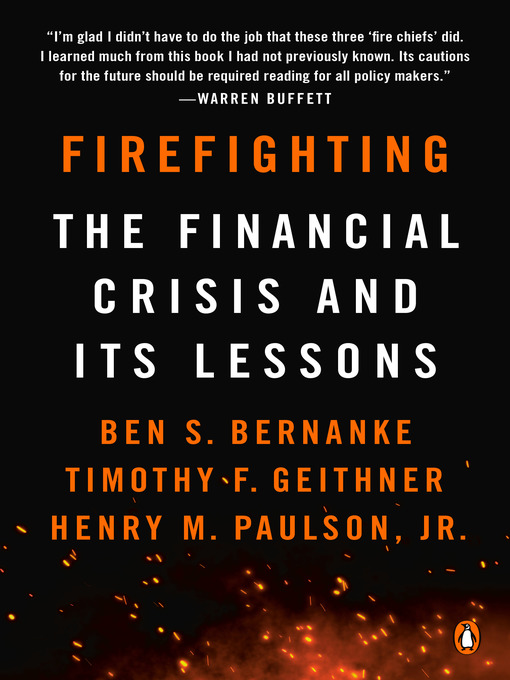-
Description
-
Creators
-
Details
-
Reviews
From the three primary architects of the American policy response to the worst economic catastrophe since the Great Depression, a magnificent big-picture synthesis—from why it happened to where we are now.
In 2018, Ben Bernanke, Tim Geithner, and Hank Paulson came together to reflect on the lessons of the 2008 financial crisis ten years on. Recognizing that, as Ben put it, "the enemy is forgetting," they examine the causes of the crisis, why it was so damaging, and what it ultimately took to prevent a second Great Depression. And they provide to their successors in the United States and the finance ministers and central bank governors of other countries a valuable playbook for reducing the damage from future financial crises. Firefighting provides a candid and powerful account of the choices they and their teams made during the crisis, working under two presidents and with the leaders of Congress.

- Ben S. Bernanke - Author
- Timothy F. Geithner - Author
- Henry M. Paulson, Jr. - Author
Kindle Book
- Release date: April 16, 2019
OverDrive Read
- ISBN: 9780525506270
- Release date: April 16, 2019
EPUB ebook
- ISBN: 9780525506270
- File size: 12296 KB
- Release date: April 16, 2019

Loading
Formats
Kindle Book
OverDrive Read
EPUB ebook
Languages
English
